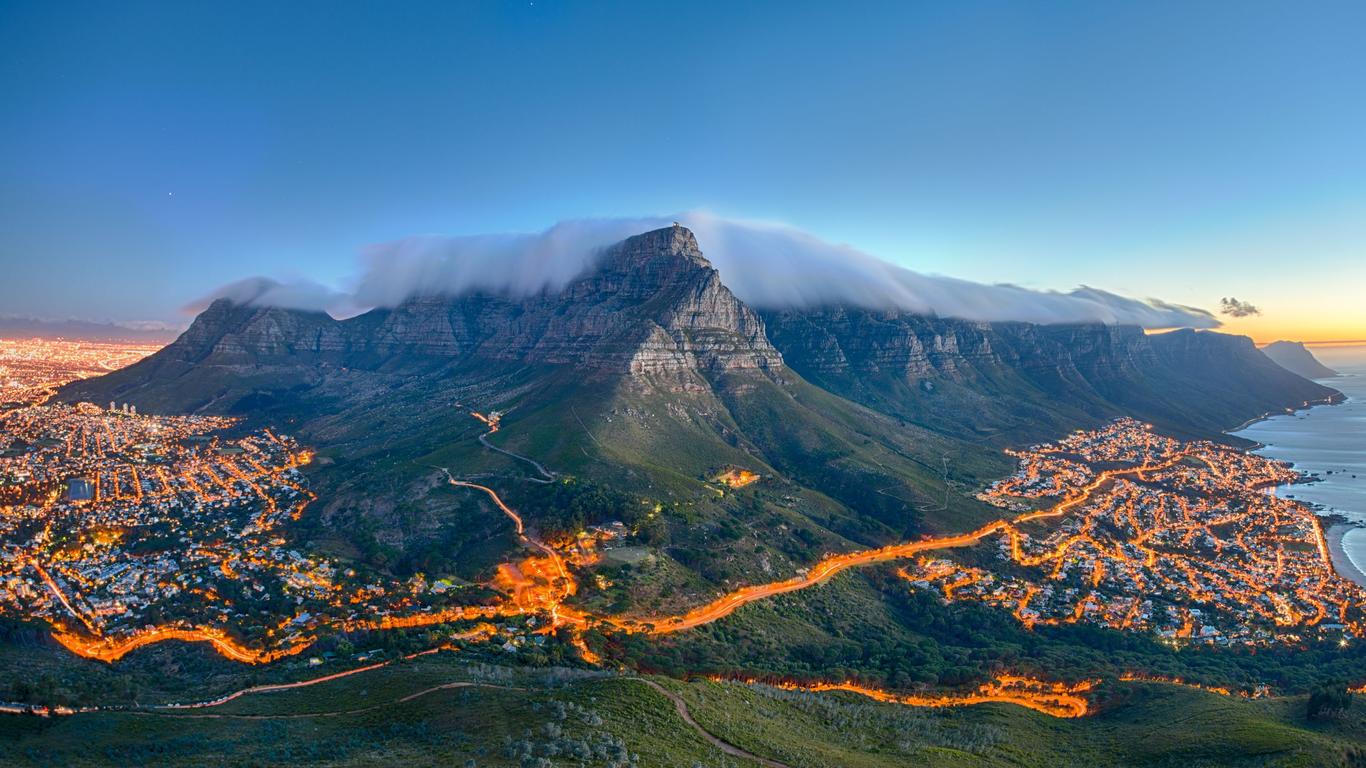Rising majestically above the city of Cape Town, Table Mountain is one of the world’s most iconic images. Its vertical front face is over a kilometre high and remarkably flat, giving the mountain its name. The lesser celebrated back side of the mountain is marked by distinctive rugged peaks, which rise and fall all the way to the southwestern tip of Africa. On most afternoons, a surreal tablecloth of mist appears over the mountain, floating over the summit before falling halfway down the front face as sunset approaches.
Table Mountain is Cape Town’s unmissable compass point, visible from almost anywhere in the city. A glass-fronted revolving cable car takes visitors to the summit, rising steeply towards a small cafe and various short walking trails. Exploring these provide a 360-degree view. Stretching out to the north is Table Bay and the city centre, with Robben Island clearly visible amidst the blue Atlantic waters. The beaches of Camps Bay and crashing Atlantic waves are seen to the west, while southward views take in the rest of the mountain chain. Look inland, and the panorama is filled with vineyards, hazy suburbs and the distant frothy waves of the Indian Ocean.
When in Cape Town, it’s worth visiting Table Mountain at the first available opportunity. Many visitors leave it to their last day in the city and become disappointed at the weather. If there are clouds anywhere in the sky above Cape Town, it’s virtually guaranteed that mist will be enveloping the Table Mountain summit. Going up in the morning and taking warm clothes is advised.
In addition to the cable car, there are numerous walking trails, the most popular being the very steep up to two-hour ascent up Platteklip Gorge. Starting next to the cable car station, this is the most direct route, but it’s also the most arduous. Much quieter and longer hiking trails ascend the back of the mountain, with their gentler gradients easier on the legs. There is no public transport to the cable car station, but the hop-on-hop-off bus has a stop very close by.
Approximately 500 million years old, Table Mountain is flanked by two more granite peaks which form the prominent Cape Town skyline. Devil’s Peak is to the east and stands a few meters higher, while Lion’s Head is in the west and makes a great sunset hike.





